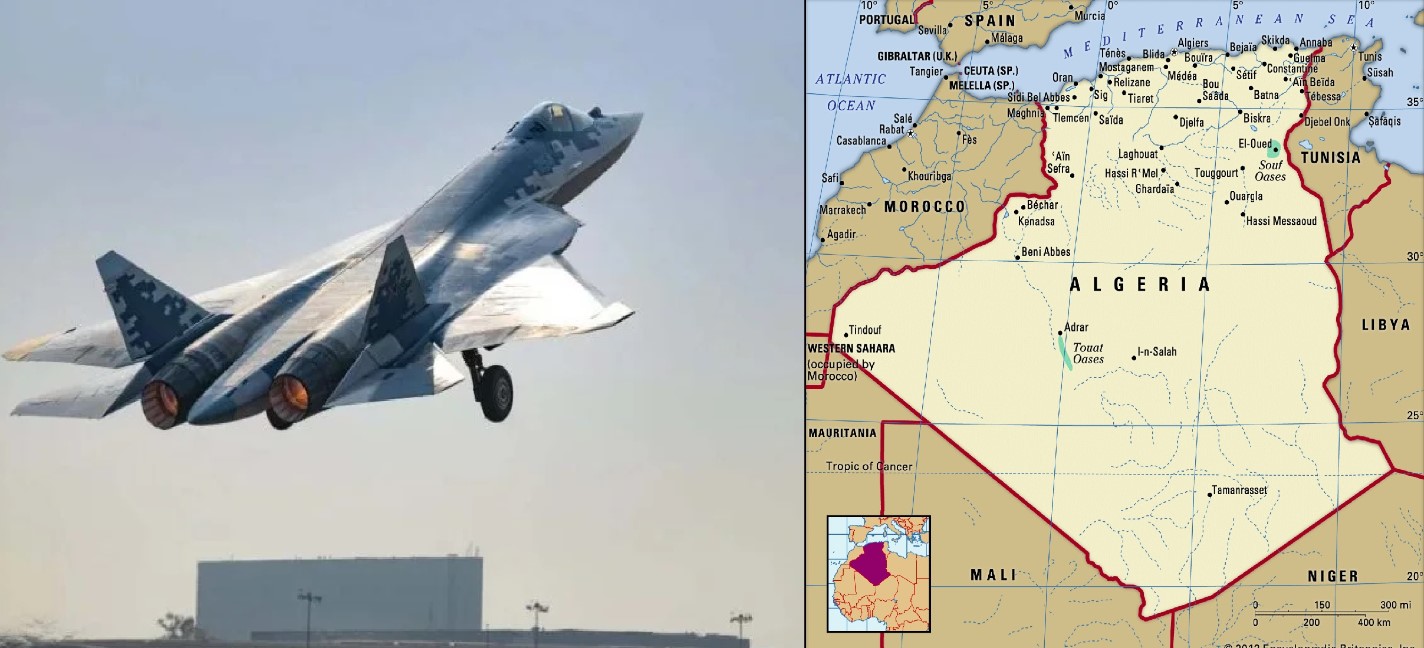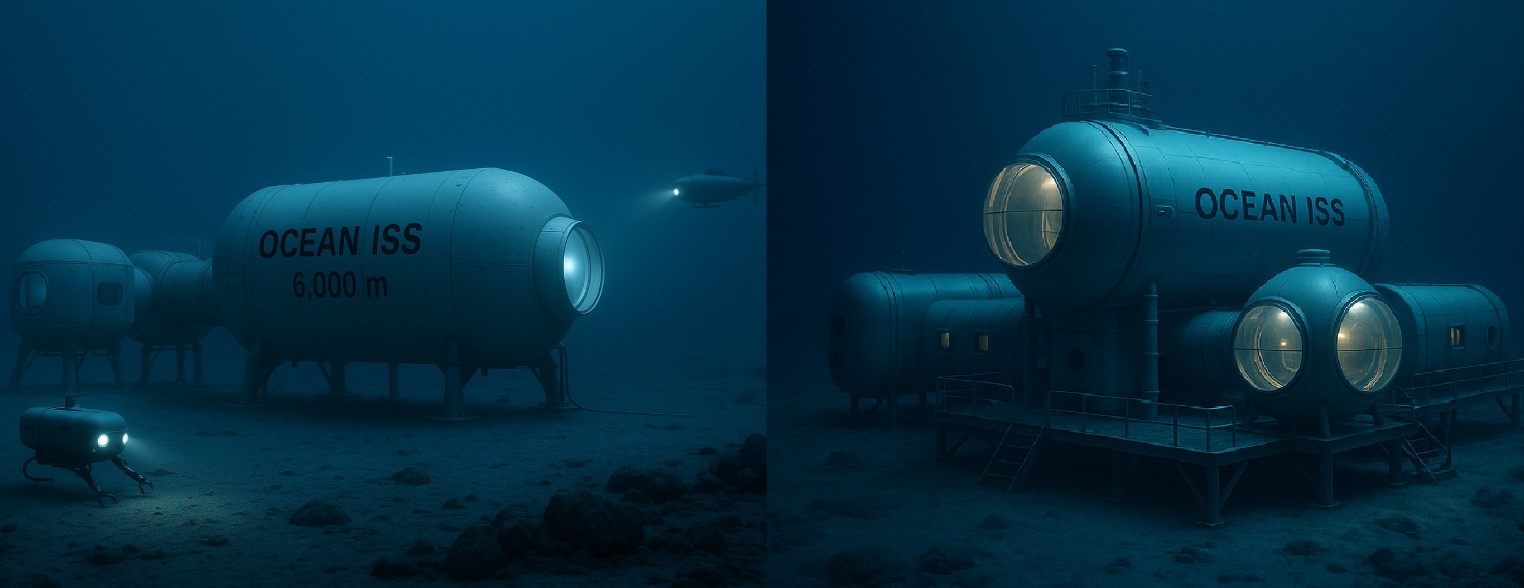Russia Delivers First Su-57E Jets as Export Order; Algeria Emerges as the Secret Customer

Russia has quietly crossed a major milestone in its combat aviation exports, delivering the first Su-57E fifth-generation fighters to a foreign customer. Officially, Moscow will not say who bought them. But leaked Russian documents, earlier Algerian statements, and years of speculation all point in one direction: Algeria.
First Su-57E Export Delivery Confirmed
On 18 November 2025, at the Dubai Airshow 2025, United Aircraft Corporation (UAC) CEO Vadim Badekha confirmed that two Su-57E fighters had been handed over to an unnamed international customer and are now on combat duty. He added that the buyer is “satisfied” with the aircraft’s performance, calling the deliveries a sign that Russia’s fifth-generation fighter is ready for the export market.
The Su-57E is the export version of Russia’s Su-57 “Felon”, designed to combine stealth, supercruise, advanced sensors, and a wide mix of air-to-air and air-to-surface weapons. While export jets are usually delivered with downgraded electronics or software, Russian media suggest the Su-57E remains close in capability to domestic models, especially in radar and long-range missile employment.
Moscow has framed the export as proof of “technological sovereignty”—a sign that, despite sanctions and wartime pressure on its defense industry, Russia can still mass-produce and sell high-end combat aircraft abroad.
Black Mirror Leak: Rostec Papers Point to Algeria
In early October 2025, hacker collective Black Mirror released a trove of more than 300 internal files allegedly taken from Russian defense conglomerate Rostec. The documents, reported by several investigative outlets, appear to detail export pricing, delivery schedules and customer codes for Russian aircraft.
One of those customers is listed under the code “012”, widely assessed to be Algeria. According to the leaked tables, this customer is scheduled to receive: 12 Su-57E fighters
-
14 Su-34E fighter-bombers
with deliveries planned between 2024 and 2026.
While the authenticity of every line in the leak cannot be independently verified, multiple defense outlets and analysts have judged the data credible and consistent with known Algerian procurement patterns and earlier rumors of a Su-57/Su-34 package aimed at replacing older Soviet-era strike aircraft.
Algeria Already Claimed “First Su-57 Export Customer” Status
Long before the Dubai announcement, Algerian state media had already declared that the country would be the first foreign operator of the Su-57E. In February 2025, Algerian outlets and international defense monitors reported that:
-
Algeria had signed a contract for Su-57E fighters.
-
Algerian pilots were training in Russia to operate the new jets.
-
Deliveries were expected to start in 2025.
Open-source defense databases and background notes on the Su-57 program also list Algeria as having ordered 14 Su-57E as part of a wider deal that includes Su-34 and Su-35 fighters, with initial deliveries slated for 2025–2026.
This means that, even though UAC refuses to name the launch customer, the leaked Rostec files, Algerian announcements, and Western reporting all converge on Algeria as the most likely recipient of the first two Su-57E jets delivered in November 2025.
What the Su-57E Brings to Algeria
If Algeria is indeed the buyer, the Su-57E will sit at the top of its airpower pyramid as the country’s first fifth-generation-class fighter.
Key capabilities the Su-57E is expected to add include:
-
Low observability: reduced radar cross-section and shaping to make detection harder at long range.
-
Advanced sensors: an AESA radar, IRST (infrared search and track), and electronic warfare suite for detection and jamming.
-
Supercruise: sustained supersonic flight without afterburner, improving persistence and missile reach.
-
Long-range weapons: ability to carry beyond-visual-range air-to-air missiles and stand-off air-to-surface weapons, including internally in its weapons bays.
For Algeria, these features would allow deep-strike missions, air superiority, and stand-off deterrence far beyond what its current fourth-generation fleet can achieve.
Algeria’s Current Air Force Fleet: From Flankers to Felons
Even before the Su-57E, the Algerian Air Force (AAF) was already one of Africa’s most capable air arms, built largely around Russian-origin combat aircraft.
According to recent open-source data and updated inventories, Algeria’s front-line fleet includes:
-
Su-30MKA multirole fighters – around 60+ aircraft in service, with additional units on order; the backbone of Algeria’s air superiority and strike capability.
-
MiG-29 variants – roughly 30–40 aircraft across upgraded MiG-29 versions, used as multirole and air-defense fighters.
-
Su-24MK2 strike aircraft – around 30+ modernized Su-24 bombers, upgraded to the MK2 standard for precision strike.
-
Su-35 – a newer generation of multirole fighters, with an initial batch already delivered in 2025 and more airframes on order, providing extended range and advanced radar.
-
Su-34E – 14 aircraft on order, visible in the same leaked Rostec documents as part of Algeria’s package with Su-57E, likely aimed at relieving or replacing Su-24s in the long-range strike role.
-
Su-57E – 12 aircraft on order according to the leaked papers, with at least two believed to have been delivered under the first export batch.
Beyond its fighters, the AAF also fields a sizable support and training fleet, including Yak-130 and L-39 trainers, Mi-26 heavy-lift helicopters, Mi-28NE attack helicopters, and a growing fleet of Chinese-made UCAVs such as Wing Loong II, CH-3/CH-4, and WJ-700. These platforms give Algeria a mix of manned and unmanned strike options and robust pilot training capacity.
Taken together, Algeria is evolving from a force centered on legacy Soviet fighters into one that combines 4.5-generation aircraft (Su-30MKA, Su-35) and fifth-generation capabilities (Su-57E), supported by modern strike bombers (Su-34E) and drones.
Why Algeria Wants the Su-57E
Algeria’s decision to pursue the Su-57E is shaped by strategic needs, long-standing defence partnerships, and practical modernization requirements. At the regional level, Algeria aims to maintain a qualitative edge over neighbouring air forces in North Africa and the Sahel. The introduction of a fifth-generation aircraft strengthens its position and enhances its overall deterrence capability.
Algeria has also relied on Russian systems for decades, from training and maintenance networks to weapons integration. Adding the Su-57E and Su-34E to its inventory fits naturally into its existing structure. This continuity reduces logistical challenges, simplifies pilot conversion, and allows Algeria to build on the platforms and technologies it already operates.
There is also a clear modernization need. Older aircraft such as the MiG-29 and Su-24MK2 are reaching their limits. The Su-34E offers an updated strike capability, and the Su-57E provides a long-term solution for air-superiority, deep-strike, and electronic-warfare roles that older aircraft can no longer fulfil effectively.
Finally, Algeria’s options for purchasing Western fighters such as the Rafale or Eurofighter Typhoon are constrained by political considerations and export restrictions. Russia continues to be a reliable supplier for Algeria, making the Su-57E a practical and politically manageable choice.
Strategic Impact for Russia and the Wider Market
For Russia, exporting the Su-57E serves several purposes. It demonstrates that the Russian aerospace industry can still deliver fifth-generation technology despite sanctions and the pressures of ongoing military commitments. It also creates a new revenue stream for a defence sector facing higher production demands and fixed domestic pricing. The presence of the Su-57E on the export market places Russia in a position to offer an alternative to fighters such as the F-35 and J-20 in countries where Western or Chinese options may be limited.
For Algeria, continued deliveries would create a tiered fighter force built around the Su-30MKA, Su-35, Su-34E, and Su-57E, supported by a growing fleet of UCAVs such as the CH-4 and Wing Loong II. This structure provides a balance of air-superiority, strike, and surveillance capabilities under a unified system based largely on Russian and Chinese equipment.
As a result, Algeria would operate one of the most capable air forces in Africa and become one of the few countries outside NATO, Russia, and China to field a fifth-generation fighter, marking a significant step in its long-term defence modernization.
✍️ This article is written by the team of The Defense News.





